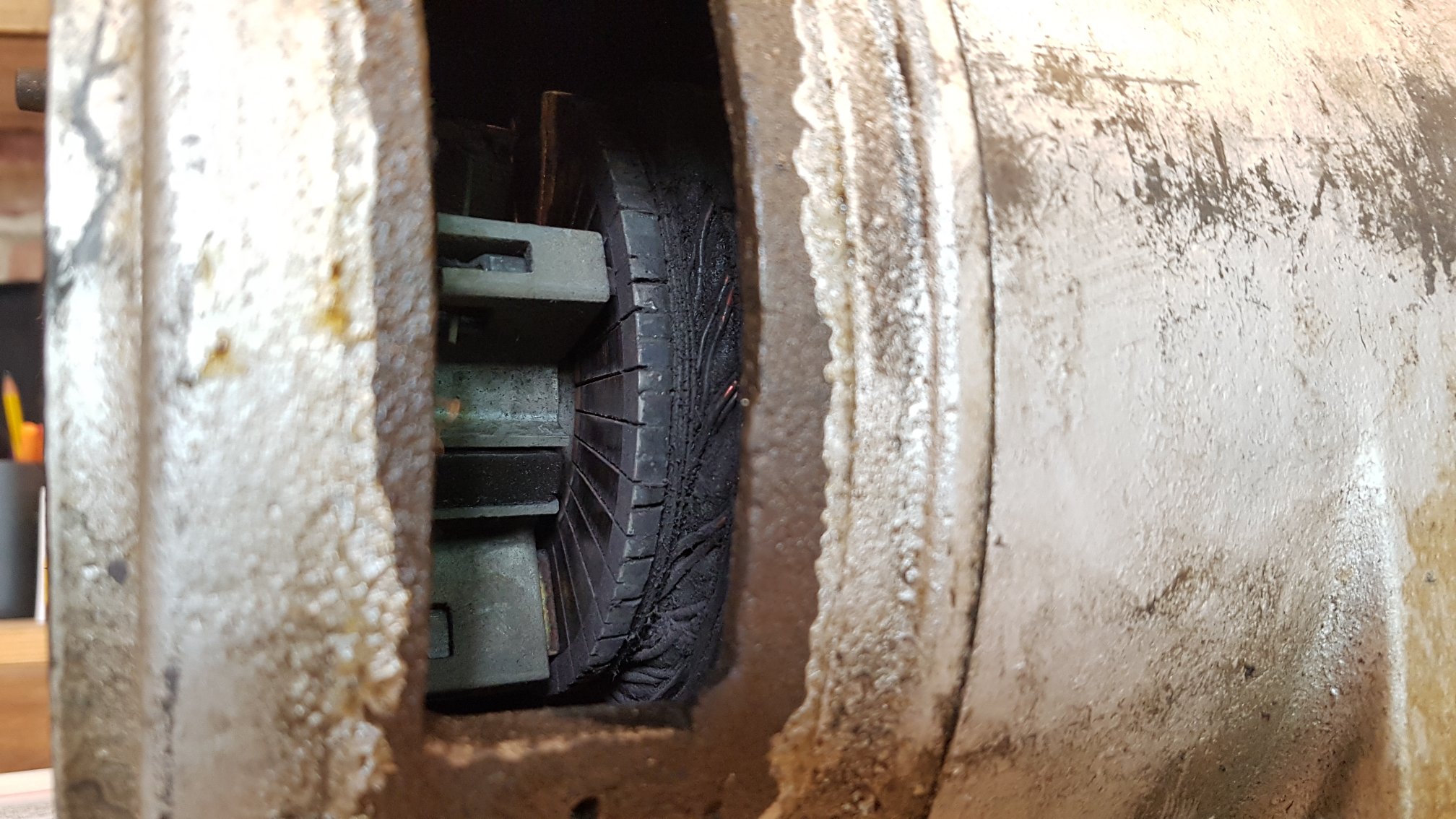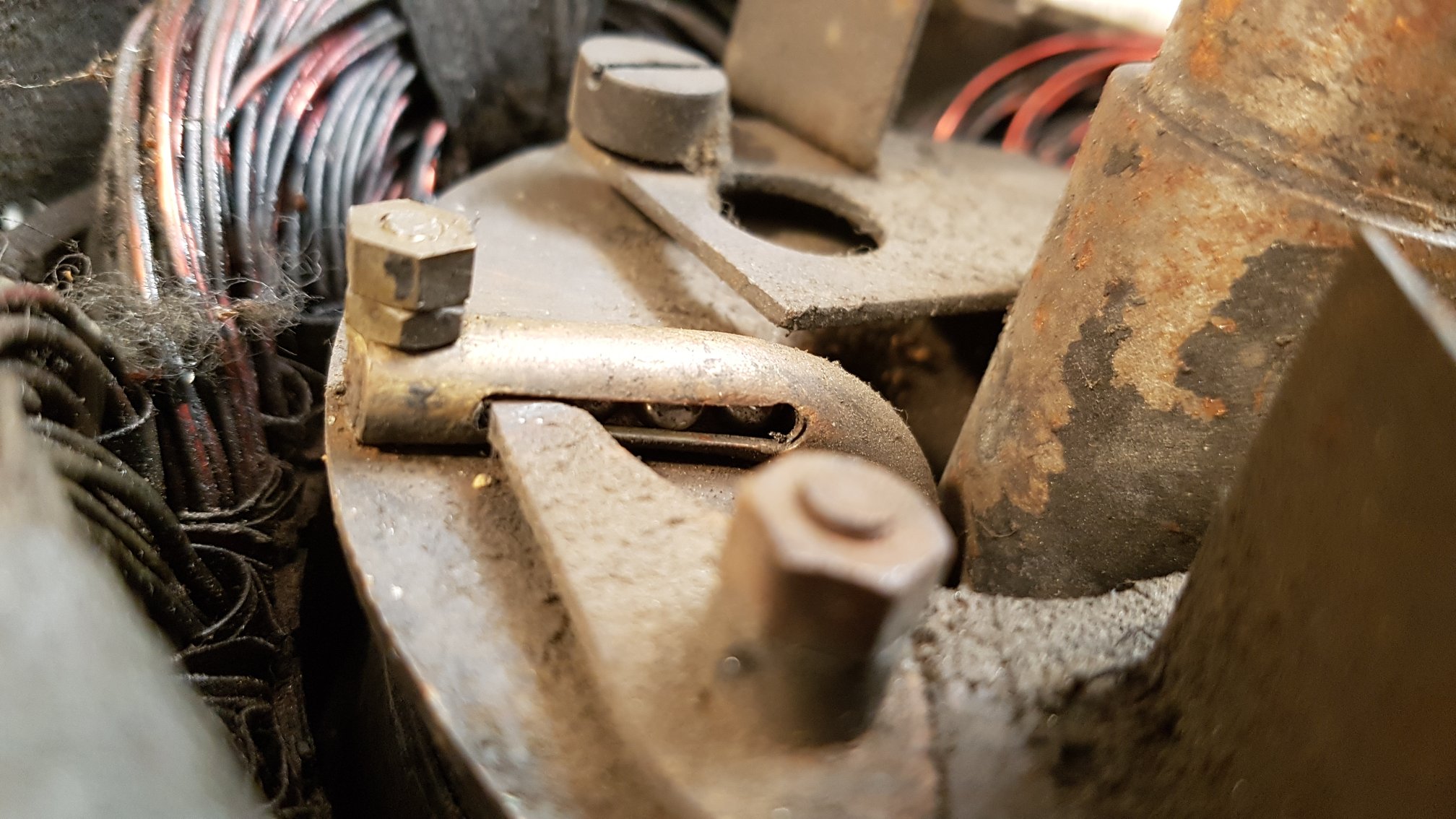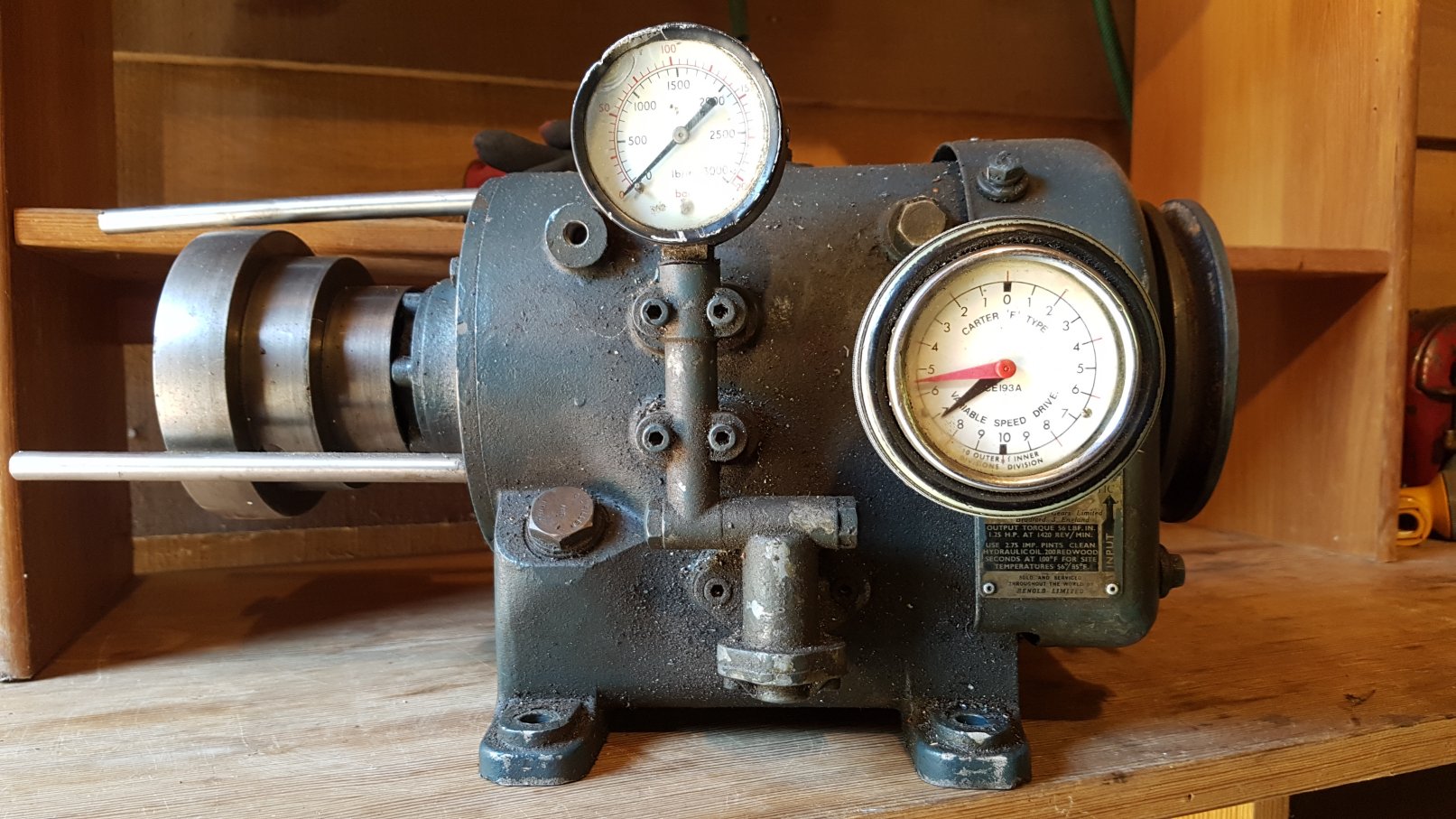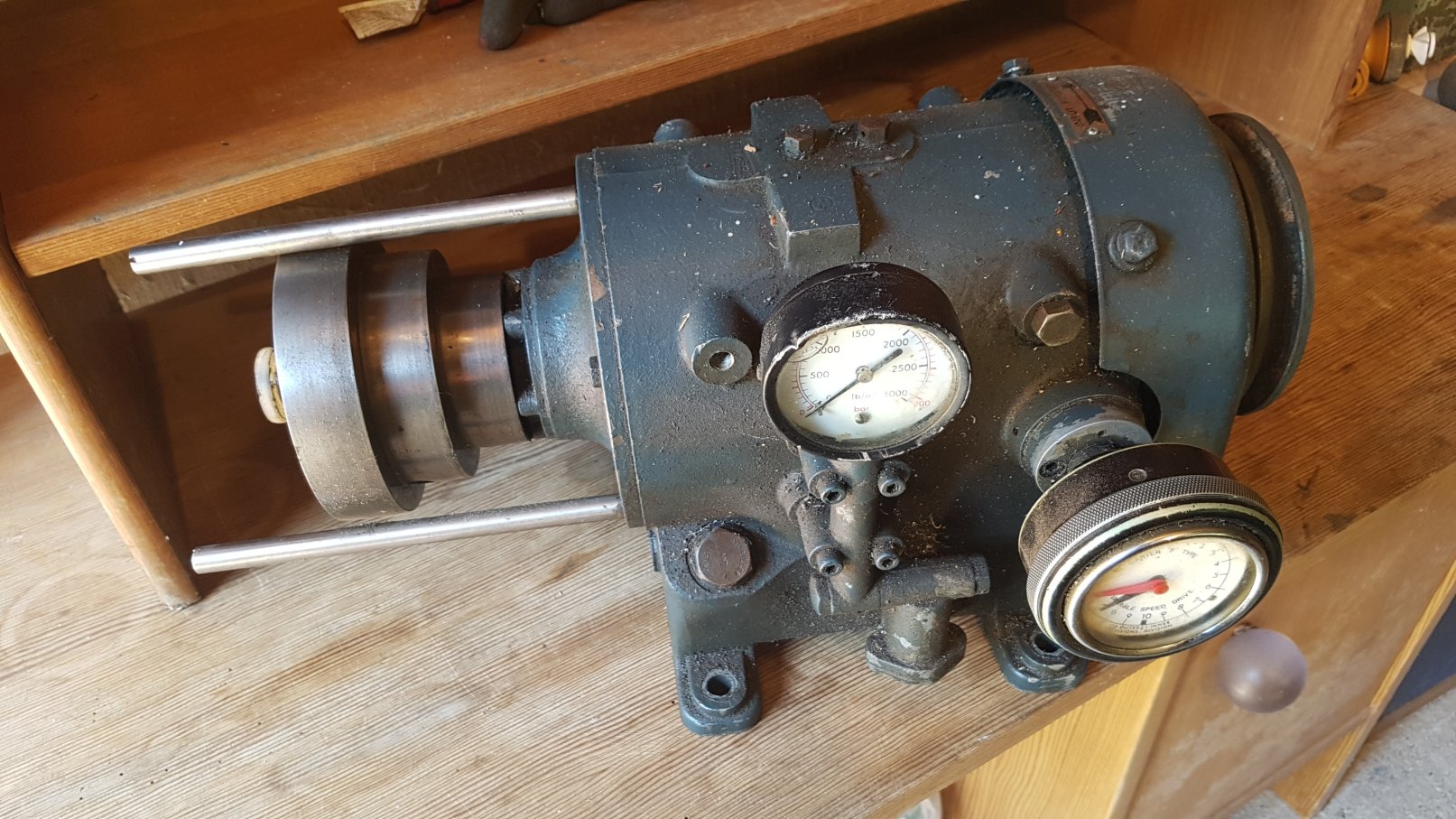threeReefs
Established Member
So I went and bought an old lathe.
Something I have been meaning to do for a while, to satisfy the longing not so much for turning metal (although obviously that's in there somewhere) as for restoring some old iron and learning about it.
I had originally thought of something like a Colchester (Bantam, Student, that sort of thing) but eventually realised this was really too much lathe for my first encounter, and I should start with something simpler.
I eventually went for this South Bend 9-inch (thanks to Tom/TFrench for helping with transport...) :

It's a 1943 lathe, and by all accounts has sat in someone's workshop untouched for a decade or two - the amount of dust and grime bears this out although there's no rust in sight - the previous owner clearly never fully cleaned it, but lavished copious amounts of oil on every visible part, which is hopefully a good sign. The headstock has barely-measurable runout, and the ways look pretty good. There is loads of backlash in the crossfeed and compound, but I reckon that should be fixable. Also a lot of back-and-forth play when I engage the half-nuts on the leadscrew, but since there's the same amount of play up near the chuck, and down near the tailstock, I figure it's the half-nuts which are worn, and not the leadscrew so much - and I can replace those. So, I'm giving it a cautious 7/10 so far, we'll see how we do.
First, all the stuff that came with it. not what you'd call a well-ordered kit of parts, but some interesting ones :

I can see

Turret attachment, I think - probably surplus to requirements...
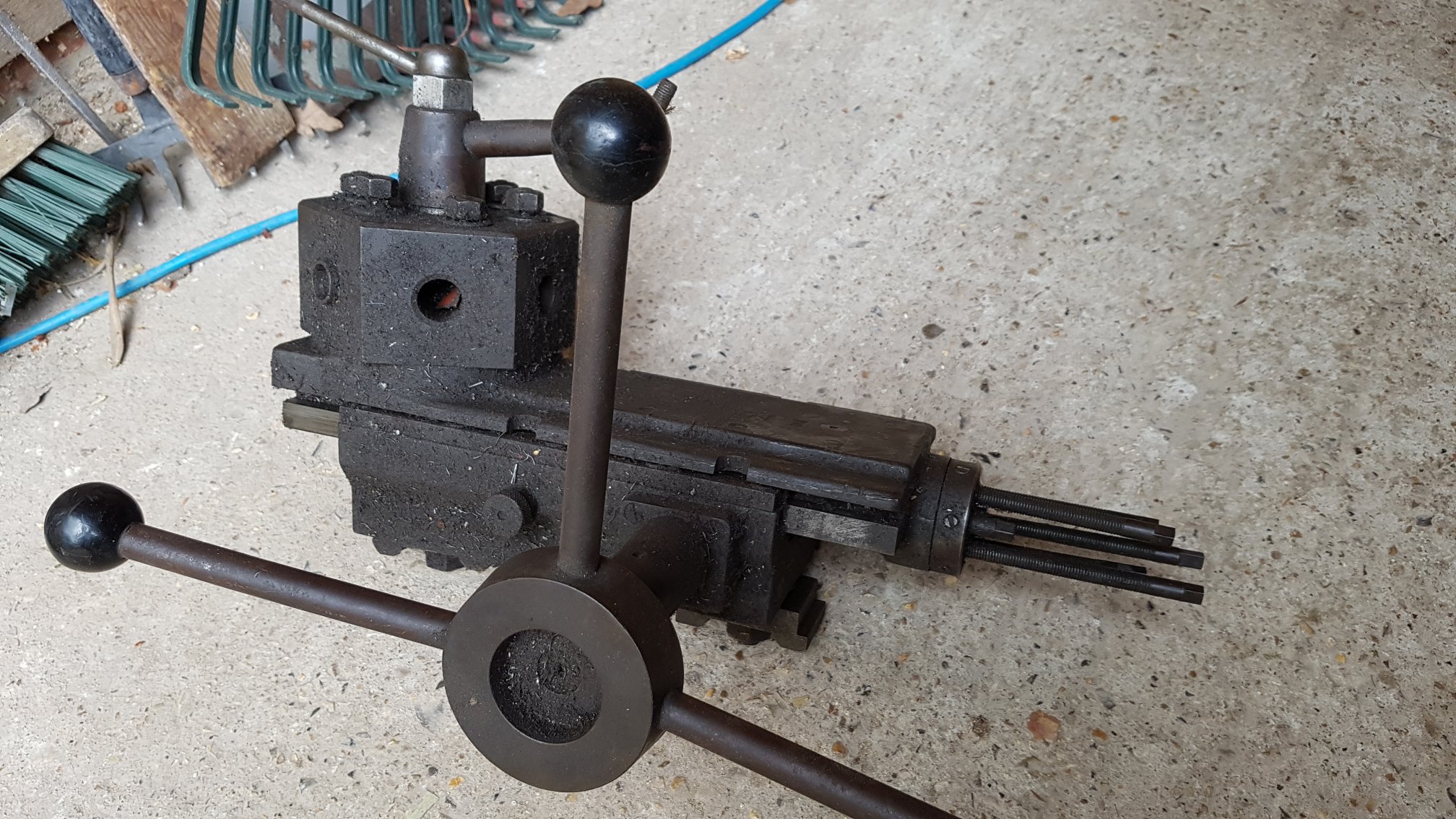
There are two other crates of miscellaneous stuff, mostly strange brackets, tools, gears, and things that look like half-finished attempts to fabricate brackets to hold odd-shaped pieces of work. Haven't even tried to make sense of those, yet.
I cannot believe the size of the motor that came with this thing :

Fricking huge and weighs 45kgs (getting on for 100lbs in old money). This came attached to a weird hydraulic speed-change device - I'll post a pic later. The previous user was apparently someone who ran an engineering shop professionally and this was his "home" lathe, so he's clearly experimented quite a bit. Tom will back me up that the motor+hydraulic drive came bolted together and were a pig to manhandle. But the motor is just 1hp ! And my favourite hand-held Hitachi circular saw is 2.5hp, with a motor the size of a tin of beans. I know the duty cycles are different, but even so. I'm gonna have to look into the motor/drive thing.
Initial exploration suggests things are incredibly grimy, chock full of swarf and cruft, so it's going to be an interesting cleanup. I will post some more pics as I go along, but I'm gently optimistic about enjoying the process, and ending up with something that works.

Something I have been meaning to do for a while, to satisfy the longing not so much for turning metal (although obviously that's in there somewhere) as for restoring some old iron and learning about it.
I had originally thought of something like a Colchester (Bantam, Student, that sort of thing) but eventually realised this was really too much lathe for my first encounter, and I should start with something simpler.
I eventually went for this South Bend 9-inch (thanks to Tom/TFrench for helping with transport...) :

It's a 1943 lathe, and by all accounts has sat in someone's workshop untouched for a decade or two - the amount of dust and grime bears this out although there's no rust in sight - the previous owner clearly never fully cleaned it, but lavished copious amounts of oil on every visible part, which is hopefully a good sign. The headstock has barely-measurable runout, and the ways look pretty good. There is loads of backlash in the crossfeed and compound, but I reckon that should be fixable. Also a lot of back-and-forth play when I engage the half-nuts on the leadscrew, but since there's the same amount of play up near the chuck, and down near the tailstock, I figure it's the half-nuts which are worn, and not the leadscrew so much - and I can replace those. So, I'm giving it a cautious 7/10 so far, we'll see how we do.
First, all the stuff that came with it. not what you'd call a well-ordered kit of parts, but some interesting ones :

I can see
- three milling attachments (one not in the pic I've taken away for cleaning)
- A dinky 4-jaw chuck and two 3-jaws, Pratt-Burnerd
- A box full of HSS tools
- A steady (looks home made)
- Good collection of backplates
- Nice set of rivett collets, with holder and two drawbars
- A strange thing that looks vaguely like an indexer, but isn't - centre pic - any ideas ?
- What looks like a turret thing, seems overkill for a lathe this size but anyway.
- A very battered chuck and some centres.

Turret attachment, I think - probably surplus to requirements...

There are two other crates of miscellaneous stuff, mostly strange brackets, tools, gears, and things that look like half-finished attempts to fabricate brackets to hold odd-shaped pieces of work. Haven't even tried to make sense of those, yet.
I cannot believe the size of the motor that came with this thing :

Fricking huge and weighs 45kgs (getting on for 100lbs in old money). This came attached to a weird hydraulic speed-change device - I'll post a pic later. The previous user was apparently someone who ran an engineering shop professionally and this was his "home" lathe, so he's clearly experimented quite a bit. Tom will back me up that the motor+hydraulic drive came bolted together and were a pig to manhandle. But the motor is just 1hp ! And my favourite hand-held Hitachi circular saw is 2.5hp, with a motor the size of a tin of beans. I know the duty cycles are different, but even so. I'm gonna have to look into the motor/drive thing.
Initial exploration suggests things are incredibly grimy, chock full of swarf and cruft, so it's going to be an interesting cleanup. I will post some more pics as I go along, but I'm gently optimistic about enjoying the process, and ending up with something that works.










































